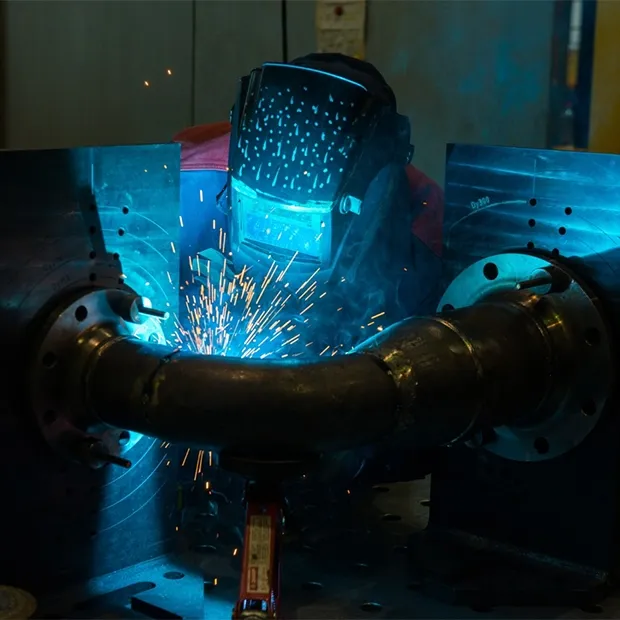Submerged Arc Welding Current Adjustment
Submerged arc welding current adjustment is a technical parameter that directly affects weld quality. If the appropriate current value is not selected, the weld seam may remain weak or the metal structure may be damaged due to excessive heat.
Submerged arc welding current adjustment varies depending on material thickness, electrode diameter, and welding speed. The wire feed speed and welding voltage are also directly related to these settings. If the current is too low, weld penetration becomes insufficient; if it is too high, the risk of spatter and deformation increases. Therefore, before each welding process, the current setting should be carefully evaluated along with all other parameters.
Points to consider in practice:
Submerged Arc Welding Current Settings
The submerged arc welding method, frequently used in industrial applications, stands out with its high penetration and ability to produce quality welds. In this method, the welding process takes place under a special flux layer, preventing external factors from affecting the arc.
Multiple parameters must be controlled simultaneously for a solid weld. Proper current adjustment is essential for successful results.
Welding current should be adjusted based on wire diameter, welding position, and material thickness. If the current is too low, the arc becomes unstable; if it’s too high, the material may overheat and deform.
Therefore, harmony must be achieved between current and welding voltage, and the system must be stabilized. Voltage settings are generally made based on arc length, which affects the control of the weld pool.
The thickness and type of the material to be welded are also key factors in determining the settings. Lower current is preferred for thin materials, while thicker pieces require higher values.
The type of flux used, its conductivity, and the welding machine’s capacity also directly affect these settings. The operator must consider these variables to achieve the correct combination.

Key factors influencing accurate current adjustment include:
- Wire speed: The feed rate of the wire per minute determines the formation and penetration of the weld pool.
- Arc length: A very short arc may disrupt the weld seam, while a long arc may cause spatter.
- Electrode diameter: Thicker electrodes require higher current; therefore, diameter and current must be proportional.
When these parameters are optimized together, an efficient welding process is achieved, and post-weld errors are minimized. With proper current adjustment, the process is kept under control, and production quality is increased. In automated systems, maintaining stable values over time also reduces costs.
The Effect of Correct Current Adjustment on Weld Quality
Choosing the right current value affects not only the depth of fusion but also the homogeneity and durability of the weld seam. Incorrectly set current may disrupt the structural integrity of the metal during welding and lead to cracks or porosity afterward.
To achieve a high-quality weld seam, it is important to keep the current stable. Fluctuating current values cause arc instability and make the weld pool uncontrollable. Especially in automated systems, monitoring current with sensors and integrating it into the process ensures quality standardization.
With a well-adjusted current:
This shortens production time and increases the reliability of the final product. Current adjustment is not just a technical value but a guarantee of production quality.
Frequently Asked Questions
Welding current is determined by the thickness of the material, electrode diameter, welding position, and the type of wire used. Additionally, welding speed and arc length are among the factors that affect this value. Each parameter should be considered together to select the most appropriate current value.
The amperage capacity of the welding machine depends on the task and the properties of the material. For thin sheets, 100-200 amps may be sufficient, while for thick steels, machines of 400 amps or more are preferred. In industrial applications, this value may reach up to 1000 amps.
The submerged arc welding method is a fusion welding process in which the welding arc occurs under a special layer of flux. This method isolates the arc from the external environment, minimizes spatter, and provides high-penetration, clean weld seams. It is commonly used with automated systems and preferred in large-scale industrial projects.
For expert support in submerged arc welding solutions, you can contact Eko Kaynak.

